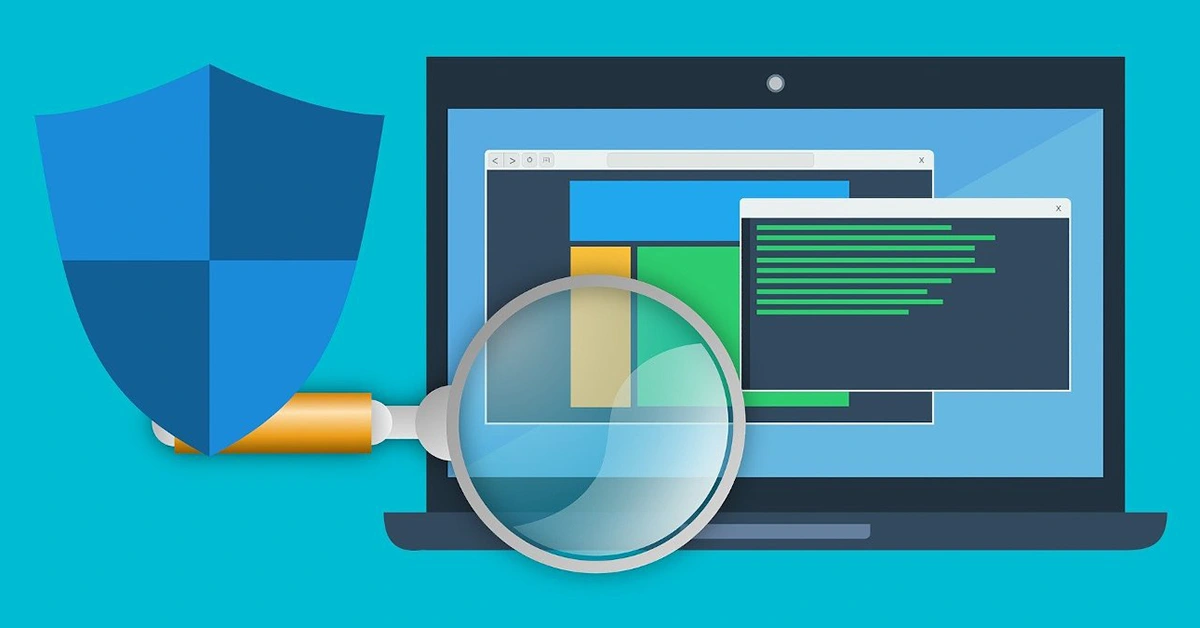
The term “antivirus” probably represents the first time most non-tech folks became acquainted with the concept of cybersecurity. Thirty years ago, Peter Norton in his black rimmed glasses graced the yellow boxes of Norton Antivirus for home use. Cybersecurity quickly evolves and, like so many applications, antivirus quickly evolves with it. Enter Next-Generation Antivirus (NGAV). This article defines NGAV, how it differs from traditional antivirus solutions, and why antivirus remains a pivotal component of your cybersecurity strategy.
What is Next-Generation Antivirus?
Next-Generation Antivirus (NGAV) represents a paradigm shift in the approach to digital threat mitigation. Traditional antivirus software primarily relies on signature-based detection, wherein it scans files against a database of known malware signatures. While effective against established threats, this method fails against new, unseen cyberattacks.
NGAV, on the other hand, leverages advanced technologies such as artificial intelligence, machine learning, and behavioral analytics to provide a more comprehensive protection mechanism.
Instead of just looking for known signatures, it observes the behavior of files and processes in real-time. If a file or process acts in a way that resembles malicious activity – even if it doesn’t match any known malware signature – NGAV can flag or block it. This proactive approach enhances protection against zero-day exploits and polymorphic malware, both of which can elude traditional antivirus solutions.
Additionally, many NGAV solutions are cloud-integrated, pulling real-time threat intelligence from vast online databases, ensuring timely and up-to-date defense against emerging threats. The cloud-centric nature also allows for quicker software updates and lighter loads on the end user’s system.
In essence, NGAV provides a multi-dimensional, dynamic defense strategy, equipping users with tools fit for modern cyber challenges. As cyber threats continue to evolve in complexity, solutions like NGAV become not just beneficial but essential for ensuring robust digital security. (1)
How Does NGAV Work?
The working mechanics of NGAV pivot on several advanced techniques that elevate its efficacy in identifying and neutralizing threats.
- Behavioral Analysis: At the core of NGAV’s functionality is its capability to monitor the behavior of files and processes in real-time. Instead of merely relying on signature-based detection, which matches files to a database of known malware signatures, NGAV observes how files interact within a system. Any aberrant behavior, even if it doesn’t align with a known threat, can be flagged or quarantined, ensuring potential zero-day attacks are curtailed.
- Artificial Intelligence and Machine Learning: NGAV harnesses AI and ML to continuously learn from the vast amounts of data it processes. This enables the software to make predictive judgments about the potential malicious nature of files, enhancing its proactive defense capabilities.
- Cloud Integration: Many NGAV solutions are now cloud-based, drawing upon real-time global threat intelligence. This means they can rapidly adapt to emerging threats, providing users with up-to-the-minute protection. The cloud-centric approach also ensures lighter system footprints, as bulky signature databases aren’t stored locally.
- Endpoint Detection and Response (EDR): Integrated EDR tools in NGAV solutions provide detailed threat analyses and offer response recommendations, giving administrators greater insight and control over potential threats. (2)
How is NGAV Different from Traditional Antivirus Solutions?
Next-Generation Antivirus (NGAV) and traditional antivirus (AV) solutions differ fundamentally in their approach to cybersecurity. The distinction becomes critical as businesses and individuals seek more robust defenses against modern cyber threats.
- Signature-Based vs. Behavioral Detection: Traditional AV predominantly employs signature-based detection, scanning files against a database of known malware signatures. While this method is effective against recognized threats, it can fall short against newer, evolving cyberattacks. In contrast, NGAV adopts a behavioral-based approach, observing file and process behaviors in real-time. This capability allows NGAV to identify and thwart even those threats that don’t match any existing malware signature.
- Reactive vs. Proactive Defense: Traditional AV is largely reactive, responding to threats as they match known signatures. NGAV, with its incorporation of artificial intelligence and machine learning, offers proactive defense, analyzing patterns to predict and prevent potential threats even before they manifest.
- Dependence on Regular Updates: Traditional AV solutions require frequent database updates to stay effective against recent threats. NGAV, especially its cloud-integrated variants, draws real-time threat intelligence from vast online databases, ensuring dynamic and up-to-date defense.
- System Performance: Traditional AV, with its regular background scans, can be resource-intensive. NGAV, leveraging cloud technology, tends to exert less strain on system resources, ensuring smoother device performance. (3)
Why NGAV is Crucial to Any Cybersecurity Stack
Next-Generation Antivirus (NGAV) represents a modern shift in cybersecurity, adapting to a rapidly changing threat landscape. Its emphasis on behavioral analysis, artificial intelligence, and real-time threat detection makes it adept at identifying polymorphic malware and zero-day exploits, which traditional antivirus might miss. Even with its advanced capabilities, NGAV is most effective when integrated within a broader cybersecurity stack. NGAV can catch malware behaviors, while other tools like firewalls, email filters, and secure web gateways address different threat vectors. As always, a comprehensive cybersecurity stack ensures that vulnerabilities in one defense layer can be compensated for by strengths in another.
Dynamic Edge Can Help
Since 1999, Dynamic Edge has helped hundreds of small and mid-sized businesses maximize the return on their technology investment. Contact us today for a free network assessment, so that we may help you implement cost-effective security solutions to keep your organization and its clients safe and productive. Our Help Desk features friendly, experienced engineers who answer calls live and solve more than 70% of issues on the first call.


